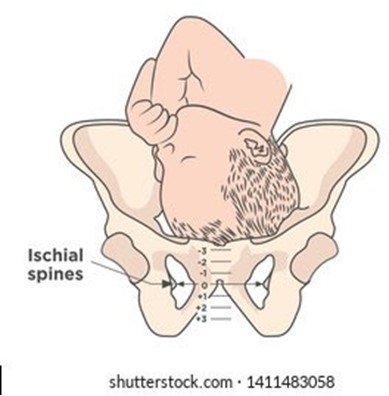A nurse is caring for a client who is requesting to go to the bathroom immediately after a vaginal birth. Which of the following actions should the nurse take?
Inform the client that she can go to the bathroom whenever needed.
Evaluate the side effects of analgesia used during labor.
Advise the client to remain in bed for the next few hours.
Assist the client to the bathroom using a wheelchair.
The Correct Answer is B
Choice A reason: Inform the client that she can go to the bathroom whenever needed is incorrect, as this action can put the client at risk of injury or complications. The client may experience orthostatic hypotension, dizziness, weakness, or bleeding after a vaginal birth, which can impair their ability to ambulate safely and independently. The nurse should assist the client to the bathroom and monitor their vital signs and lochia.
Choice B reason: This is the correct action. The nurse should assess the client for any residual effects of analgesia, such as dizziness or unsteadiness, which could increase the risk of falls if the client tries to get up.
Choice C reason: Advise the client to remain in bed for the next few hours is incorrect, as this action can increase the risk of bladder distension, infection, or thrombosis. The nurse should encourage and assist the client to ambulate early and frequently after a vaginal birth, as long as there are no contraindications. The nurse should also monitor the client for signs of orthostatic hypotension and provide support as needed.
Choice D reason: While assisting the client is a good approach, it is important to first evaluate her condition to ensure it is safe for her to get out of bed. If she has been assessed and is deemed safe to ambulate, assisting her to the bathroom with support might be appropriate. However, the initial step is to assess her condition.
Nursing Test Bank
Naxlex Comprehensive Predictor Exams
Related Questions
Correct Answer is B
Explanation
Choice A reason: The cervix is effaced 3 cm, it is dilated 30%, and the presenting part is 1 cm above the ischial spines is incorrect, as this does not follow the correct order and measurement of cervical assessment. Cervical effacement is measured in percentage, not in centimeters, and it indicates the thinning or shortening of the cervix. Cervical dilation is measured in centimeters, not in percentage, and it indicates the opening or widening of the cervix.
Choice B reason: The cervix is dilated 3 cm, it is effaced 30%, and the presenting part is 1 cm above the ischial spines is correct, as this follows the correct order and measurement of cervical assessment. Cervical dilation, effacement, and station are recorded in that order to describe the progress of labor. Station refers to the relationship between the presenting part of the fetus and the maternal pelvis, measured by the level of the ischial spines. A negative station means that the presenting part is above the spines, while a positive station means that it is below.
Choice C reason: The cervix is effaced 3 cm, it is dilated 30%, and the presenting part is 1 cm below the ischial spines is incorrect, as this does not follow the correct order and measurement of cervical assessment. Cervical effacement is measured in percentage, not in centimeters, and it indicates the thinning or shortening of the cervix. Cervical dilation is measured in centimeters, not in percentage, and it indicates the opening or widening of the cervix.
Choice D reason: The cervix is dilated 3 cm, it is effaced 30%, and the presenting part is 1 cm below the ischial spines is incorrect, as this does not match the documentation of station. A negative station means that the presenting part is above the spines, while a positive station means that it is below.

Correct Answer is B
Explanation
Choice A reason: Request the RN perform a cervical examination is incorrect, as this action is not indicated for a client who has a history of genital herpes. A cervical examination can introduce infection and trauma to the cervix and increase the risk of viral shedding and transmission to the fetus. The nurse should avoid performing or requesting a cervical examination unless absolutely necessary.
Choice B reason: Initiate fetal monitoring for baseline and changes is correct, as this action is appropriate for any client who is in labor. Fetal monitoring can provide information about the fetal heart rate, variability, accelerations, decelerations, and contractions. The nurse should monitor the fetal status continuously and report any abnormal findings to the provider.
Choice C reason: Prepare for a vaginal birth is incorrect, as this action may not be possible for a client who has a history of genital herpes. A vaginal birth can expose the fetus to the herpes virus and cause neonatal infection, which can be life-threatening. The nurse should assess the client for signs of active lesions or prodromal symptoms and prepare for a cesarean birth if indicated.
Choice D reason: Administer antibiotics is incorrect, as this action is not effective for a client who has a history of genital herpes. Genital herpes is caused by a virus, not a bacteria, and antibiotics have no effect on viral infections. The nurse should administer antiviral medications as prescribed to reduce viral shedding and transmission to the fetus.
Whether you are a student looking to ace your exams or a practicing nurse seeking to enhance your expertise , our nursing education contents will empower you with the confidence and competence to make a difference in the lives of patients and become a respected leader in the healthcare field.
Visit Naxlex, invest in your future and unlock endless possibilities with our unparalleled nursing education contents today
Report Wrong Answer on the Current Question
Do you disagree with the answer? If yes, what is your expected answer? Explain.
Kindly be descriptive with the issue you are facing.
